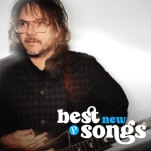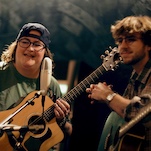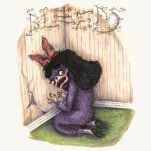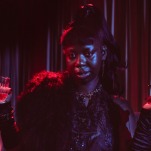Duke: A Life Of Duke Ellington by Terry Teachout
The A Train-ing

According to the renowned jazz musician Duke Ellington, good luck stems from “being at the right place at the right time, doing the right things before the right people.” It’s tricky to arrange all four things at once—in fact, songs have been written about getting some of these factors right, while messing up others.
The new Ellington bio by Terry Teachout, a critic at the Wall Street Journal (Teachout has also written a book on Louis Armstrong), shows a man capable of aligning the stars on a regular basis…with talent, charm and a little help from his friends.
Ellington grew up in the nation’s capital, and much has been made of his family background. Jelly Roll Morton cut his teeth playing in brothels in New Orleans; in contrast, Ellington’s parents were relatively well-off (for African Americans in the early 1900s), and their son played at snazzy parties around DC in “society bands.” Some art may be born from the need to escape poverty but, luckily, poverty is not a necessity for artistic creation.
Ellington moved to Harlem—the right place—from DC, looking for a hot new scene. In 1926, he hooked up with Irving Mills, one of the right people, who owned a music publishing company and who possessed a knack for finding talented jazz musicians. Mills and Ellington teamed for 13 years, a time in which Mills exploited the artist’s talent but also promoted him to the press and published his compositions, making sure that the two shared co-writing credits on a lot of tracks that became standards. Ellington started playing at the Cotton Club (with Mills’ help) in 1927, the year, Teachout writes, that “100 million records were sold in America.”(The right time.)
The Cotton Club: owned by gangsters, a place where wealthy whites came to expose themselves to diversity in contained, unthreatening doses. According to Howard “Stretch” Johnson, a dancer who worked at the club, it functioned “to appease the appetite for a certain type of black performance, the smiling black, the shuffling black…”
Ellington provided entertainment; he also used his time to grow as an artist: “He used to set us on the stand and pay us union scale, maybe for five hours, just to help him formulate chords,” said Freddie Jenkins, a trumpeter.
Soon, the press began to embrace Ellington. The New Yorker’s nightlife writer, “Lipstick,” described the Duke’s music as “barbaric and rhythmic and brassy as jazz ought to be…mellow as music ought to be…and…all too much for an impressionable girl.” CBS radio broadcast Ellington’s Cotton Club performances all over the country, likely overwhelming “impressionable” ladies from coast to coast. Ellington hit the studio too, and he toured heavily.
Teachout adeptly balances several aspects of Ellington’s world in his book. First: Ellington’s personal history—especially the way he tried to recreate the world of his parents—and his relationships with women. Sometimes the author spends a little too long speculating about the looks of Ellington’s various lovers.
Simultaneously, Teachout explores a larger history of race relations in America. Ellington battled against racist perceptions of black musicians, but he also played a certain role—always smooth, charming and well-dressed. With Mills’ assistance, Ellington worked to be “a different kind of black man, fine-spoken and expensively tailored, a fellow whom broad-minded white folks could imagine introducing to their friends, even if they might not care to bring him home to meet their wives.” Ellington didn’t see much value in political protest, and when the Civil Rights movement began, he didn’t always agree with its methods. (“The only people who did good out of the goddamn parade [Martin Luther King’s March on Washington for Jobs and Freedom] was the people who owned business in Washington, the hotels,” said Ellington.)
Ellington always made explicit his mission to show black musicians as capable as white ones—not just objects of fascination, but creators of great art—and he expressed a desire to capture essential aspects of black life in his music.
Teachout does not shy from discussing that music in technical detail. “The Hot Bach,” as The New Yorker dubbed Ellington, “wrote or co-wrote most of the songs that his musicians played,” a rarity back in the day, and “his approach to form was…unconventional.” The song “Diminuendo and Crescendo in Blue,” Teachout tells us, ignores common tropes like solos, or even themes. It’s merely riffs, “tossed back and forth.” Another tune, “Rude Interlude,” earned praise from Jelly Roll Morton, who said begrudgingly of Ellington, “he wasn’t afraid to experiment” (despite all those stuffy society parties).
-

-

-

-

-

-

-

-

-

-

-

-

-

-

-

-

-

-

-

-

-

-

-

-

-

-

-

-

-

-

-

-

-

-

-

-

-

-

-

-








































